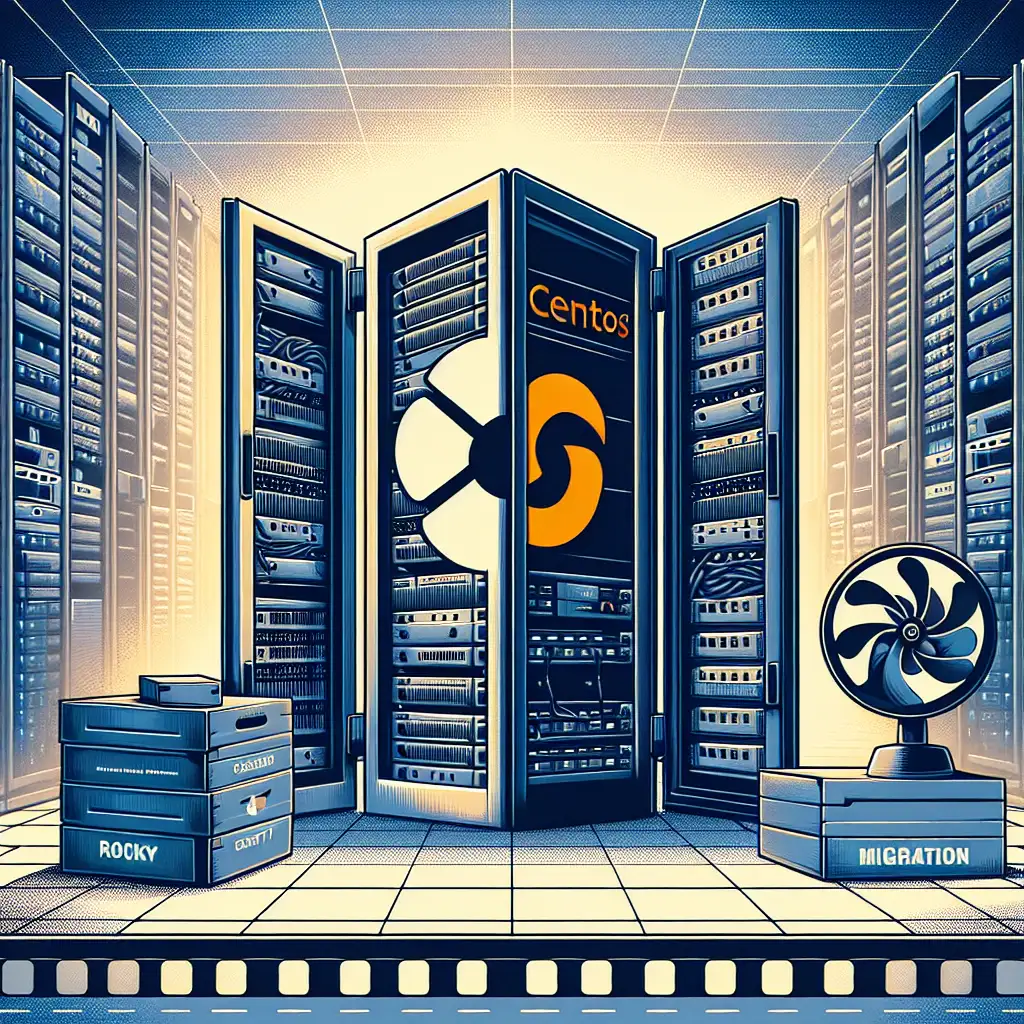Step-by-Step Guide to Seamlessly Migrate CentOS 7 to Rocky Linux Without Downtime
As CentOS 7 nears its end-of-life, many organizations face the pressing need to transition to a stable, community-supported alternative like Rocky Linux. Ensuring this migration goes smoothly is critical—not just to maintain security and support but to avoid operational disruptions that can impact your business.
Forget the panic-driven rush—this guide breaks down the migration into clear, manageable stages that empower sysadmins to migrate confidently, debunking the myth that switching your server’s distro must be disruptive or complex.
Why Move from CentOS 7 to Rocky Linux?
CentOS 7 reached its official end-of-life on June 30, 2024. Without security patches and updates, continuing on CentOS 7 exposes your servers to vulnerabilities and compatibility issues.
Rocky Linux is a downstream rebuild of Red Hat Enterprise Linux (RHEL), community-supported and designed as a drop-in replacement with long-term stability—precisely what enterprises need post-CentOS 7.
Pre-Migration Preparation: Set Yourself Up for Success
1. Audit Your Current Environment
- Inventory installed applications: Know what services are running.
- Identify dependencies: Some applications may have compatibility considerations.
- Check current kernel and package versions
Example: Run
rpm -qa > centos7-packages.txt systemctl list-units --type=service > centos7-services.txt
Document these outputs for comparison post-migration.
2. Backup Everything
Before touching anything major:
- Full server backup (disk image or snapshot)
- Back up configuration files (
/etc,/var/www, database config files) - Export databases if applicable (e.g.,
mysqldump)
3. Choose Your Migration Strategy
You have options depending on your environment:
- In-place migration using tools like
migrate2rocky(available from Rocky Linux team) - Provision fresh servers with Rocky Linux and migrate workloads stepwise
- Containerize or virtualize services and move gradually
This guide will focus on the in-place migration method, which requires careful planning but avoids provisioning new hardware and speeds up cutover.
Step 1: Install migrate2rocky Tool and Test Migration
Rocky Linux provides the official migrate2rocky script designed for minimal disruption.
sudo yum install -y epel-release
sudo yum install -y migrate2rocky
Before running it against production:
- Test in a non-critical environment (e.g., staging server clone)
- Review the default behavior by simulating:
sudo migrate2rocky --precheck
This command runs a pre-check verifying system eligibility and listing potential blockers.
What Does migrate2rocky Do?
- Converts CentOS repositories into Rocky Linux repos
- Removes conflicting CentOS packages
- Synchronizes rpmdb database metadata aligning with Rocky packages
- Upgrades packages maintaining system integrity
Step 2: Disable Unnecessary Services & Notify Stakeholders
Though this guide aims for zero downtime, briefly pausing write-heavy applications ensures filesystem consistency during key operations like rpmdb updates.
For example, temporarily stop heavy database writes or disk-intensive jobs:
sudo systemctl stop mysqld
sudo systemctl stop httpd
Also, notify users/team about scheduled maintenance windows—even if short—to manage expectations.
Step 3: Run the Migration Script
Run the migration as root or with sudo:
sudo migrate2rocky -r
The -r option performs repository backup and switch; it’s recommended unless you’re confident skipping backups.
Step through prompts carefully—migrate2rocky generates logs at /var/log/migrate2rocky.log which you should monitor real-time:
tail -f /var/log/migrate2rocky.log
Step 4: Reboot & Verify System Integrity
After migrating packages successfully, reboot your server:
sudo reboot
Upon restart, verify:
- Operating System release info
cat /etc/os-release
# Should say "Rocky Linux release x.x"
- Service status checks, example:
systemctl status sshd httpd mysqld
Confirm all critical services are running without errors.
Step 5: Post-Migration Clean-up & Testing
Clean Package Cache
To free space and clean old data:
sudo dnf clean all
sudo rm -rf /var/cache/dnf/*
Verify Application Functionality
Check application logs for errors—for instance web app error logs or database logs—to catch subtle issues early.
Test Network & Client Connectivity
Run testing scripts or manual checks from client machines ensuring no degraded experience exists post-migration.
Step 6: Monitor & Optimize Over Subsequent Weeks
Don’t consider migration “done” at reboot. Monitor performance metrics using tools like top, iotop, and centralized logging solutions for any anomalies during regular workloads.
If you run automation tools (Ansible/Chef/Puppet), update their inventories/configs as needed reflecting new OS information.
Bonus Tips for No-Downtime Migration Success
- Use load balancers where possible; migrate nodes sequentially.
- For clustered databases or distributed systems, apply rolling upgrade tactics.
- Schedule migrations during low traffic windows.
- Document every step meticulously—makes rollback easier if needed.
Conclusion
Migrating from CentOS 7 to Rocky Linux no longer needs to be a source of fear or disruption. Using tools like migrate2rocky, appropriate preparation, and phased execution, you can complete a stable transition without downtime. Your infrastructure stays secure and supported while your team gains confidence in managing future distro evolutions smoothly.
Ready to start? Back up your systems, test thoroughly, and make the move confidently toward a modern Rocky Linux environment today!
Feel free to ask questions or share your migration experience in the comments!
